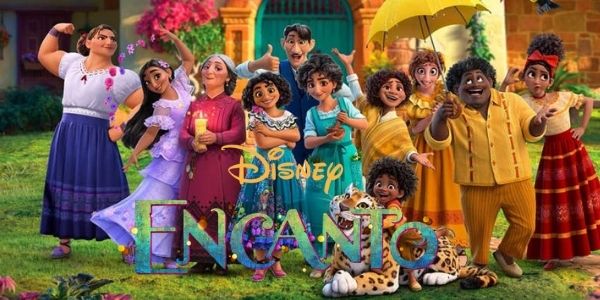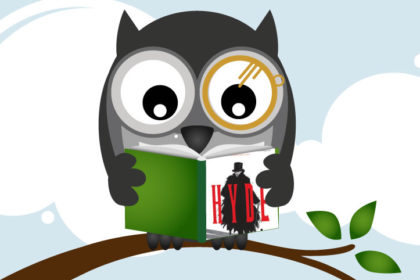Shang-Chi and the Legend of the Ten Rings came out this month, so of course, I- a self-proclaimed nerd- had to see it. I’ll be honest and say that I didn’t know anything going into the movie. I hadn’t heard of the character before, so my knowledge about who would be important or what kind of enemies might crop up were a mystery to me. Even so, it was a really fun movie.
(Please note that this is all written from a white person’s perspective).
Real-Life Influences
The most memorable part of the movie has to be the incredible fight scenes. The choreography was jaw-dropping with tons of references to real Kung Fu. Honestly, the fight scenes in Shang-Chi are probably the best in the whole Marvel Cinematic Universe (at least so far).
It may be a superhero movie, but it’s also undoubtedly a martial arts/ Kung Fu movie. Despite this, there doesn’t seem to be a specific style of Kung Fu used. There are references to some styles and philosophies taken from certain disciplines in Shang-Chi but none of the fighters on screen follow any of the many established Kung Fu styles.
Another adaptation from real life is the weapons used by The Ten Rings syndicate and the Ten Rings themselves. While there aren’t any actual legends or stories of a mystical set of ten rings, they are likely based on the iron bracelets some traditional Kung Fu practitioners use to train their forearms.
The rings have a dual function. Each ring weighs over one pound, so they act as arm weights to help strengthen the upper body. Since the rings are usually a bit loose, they bang around and harden the forearms to help with the impact of blocking punches too. Apparently, some practitioners even have forearms so hard their blocks actually hurt the person punching them.
The primary hooked weapons used by the Ten Rings syndicate are also based on actual weapons but with a modern twist. In the movie, they’re shown to be electrified and are definitely the world’s most terrifying tasers. A slight touch is enough to send most characters to the ground in a seizing mess.
The weapons alone are just a couple of examples of the movie pulling things from real life into the MCU with fantastical twists. With a little research, I could probably write a whole essay on just those without actually paying attention to the story itself. The best way to learn more about those other examples would be watching the movie yourself. You won’t regret it!
So-So Story (minor spoilers ahead!)
As far as movies go, the story in Shang-Chi is a little underwhelming. For comic book movies, though, it was really interesting. Although how on earth a 14-year-old boy managed to seamlessly take on a new identity in the United States is beyond me.
They could have spent at least a little time explaining how “Shaun” managed to find housing and enroll in public schools as an American citizen.
Aside from some plot holes, the story isn’t hard to follow and is fun to watch. The dynamic between the two main characters, Shaun and Katy, was very relatable as two 20-somethings with tons of potential who aren’t sure what they want in life while also facing pressure from their friends and family to grow up.
It was kind of comforting to see that even after everything they went through, Shaun and Katy didn’t actually change all that much. There was no dramatic personality shift even after they shouldered the responsibility of saving the world. In the end, they are still a couple of goofballs who have each other’s backs through thick and thin; and are prone to some less than responsible karaoke sessions.
Even if the story of Shang-Chi itself has its goofy moments, there are a lot of serious aspects too. A huge theme of the movie is blending influences and finding balance.
Shaun takes on aspects of both his mother’s and his father’s fighting styles. He also blends his traditional Chinese culture with his experiences in America. Granted, I think most American audiences will have a hard time picking that out.
That theme of blending influences and cultures is a huge part of American history. It feels fitting for the story of an immigrant… Though if I had a nickel for every time I’ve heard the term “melting pot” in regards to the US I would be filthy rich.
Overall, the story has its good points and its mediocre ones. Many of its characters don’t get much screen time, and we don’t really get to know that much about them. Most of the story is focused on Shaun’s parents and how he comes to terms with their legacies.
Even if the story feels lackluster to you, it’s worth the watch. If you’re looking for a movie with a better story, though, be sure to check out last month’s review on The Green Knight!
Changing the Formula
I really liked Shang-Chi. It isn’t my favorite Marvel movie, sure, but it was a great way to kick off Phase 4, and it did a really great job expanding the scope of the MCU. It feels like a real turning point for Marvel movies and a much-needed change to the usual flow of Marvel stories.
A quick note if you aren’t familiar with Marvel movies: they are released in groups called Phases. Phase 1 introduced us to the Avengers. Then we get to Phase 2, which showed the consequences of the Avengers’ actions. Phase 3 introduced the conflict between superheroes. Finally, Phase 4 introduced a new wave of heroes after the events of Avengers: Infinity War. (Phase 4 just began with the release of Black Widow back in July of 2021.)
Most Marvel movies until Phase 4 introduce characters with a deeply personal conflict that doesn’t usually have world-ending ramifications. There are some exceptions *cough* Dr. Strange *cough*, but this wasn’t the case for Shang-Chi’s introduction. It also looks like the rest of Phase 4 is going to be following suit.
The change is probably thanks to the success of the previous Phases. The MCU is building on itself very quickly. I doubt it will it be long until it’s as convoluted as the comic books. That’s not a bad thing, in my opinion, but it does make it harder and harder to understand the references to other movies. The later you start watching, the more content you’ll have to get through to understand the big picture.
Even if you aren’t interested in watching the whole Marvel Cinematic Universe (which is pushing 25 films as of September 2021), I would still really recommend Shang-Chi. It’s great for anyone who likes special effects, fantasy, and especially martial arts movies. While there are references to the MCU, you can still enjoy the story without seeing everything else.
If you’re interested in learning more about the source material for the MCU, head over to Marvel.com. There are loads of character overviews you can skim which is pretty helpful. It allows you to know more about the important people without needing to read hundreds of comic books.
What are your thoughts on Shang-Chi and the Legend of the Ten Rings?





[…] if you are curious about some of the better movies from a different phase, Shang-Chi is the best from Phase 4 so […]